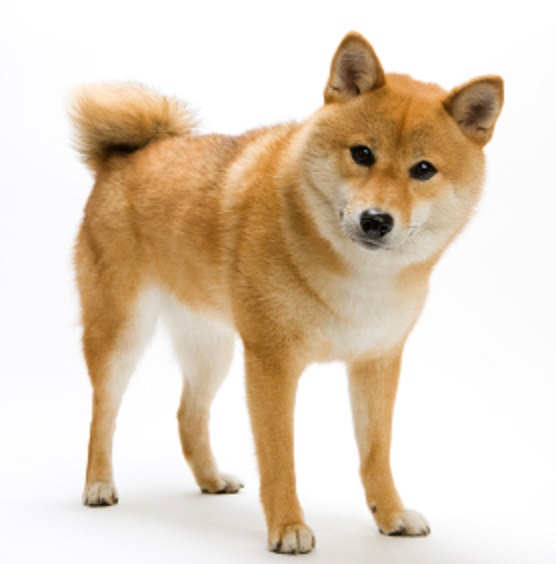
Shiba Inu

Navigate through the tabs
Navigate through the tabs below to view the breed's info of your interest.
The breed's info is divided in four sections; namely:
the breed's history ,
the breed's main stats ,
the dog's potential health issues
and finally, how the breed scored in 26 different categories.
All the above information should give you a respectively good overview for the dog of your interest.
Dog Breed's Main Info
The Breed's History:
Recent DNA analysis indicates that this Asian spitz-type dog is one of the oldest dog breeds.
Originally, the Shiba Inu was bred to hunt and flush small game, such as birds and rabbits. Despite efforts to preserve the breed, the Shiba nearly became extinct during World War II due to a combination of food shortage and a post-war distemper epidemic. All subsequent dogs were bred from the only three surviving bloodlines.
These bloodlines were the Shinshu Shiba from Nagano Prefecture, the Mino Shiba from Gifu Prefecture, and the San'in Shiba from Tottori and Shimane Prefectures.
The Shinshu Shibas possessed a solid undercoat, with a dense layer of guard-hairs, and were small and red in color.
The Mino Shibas tended to have thick, prick ears, and possessed a sickle tail, rather than the common curled tail found on most modern Shibas. The San'in Shibas were larger than most modern shibas, and tended to be black, without the common tan and white accents found on modern black-and-tan shibas. When the study of Japanese dogs was formalized in the early and mid-20th century, these three strains were combined into one overall breed, the Shiba Inu.
The first Japanese breed standard for the Shiba, the Nippo Standard, was published in 1934. In December 1936, the Shiba Inu was recognized as a Natural Monument of Japan through the Cultural Properties Act, largely due to the efforts of Nippo (Nihon Ken Hozonkai), the Association for the Preservation of the Japanese Dog.
In 1954, an armed service family brought the first Shiba Inu to the United States. In 1979, the first recorded litter was born in the United States. The Shiba was recognized by the American Kennel Club in 1992 and added to the AKC Non-Sporting Group in 1993. It is now primarily kept as a pet both in Japan and abroad.
In the United States, the growing popularity of the Shiba Inu is evident as the American Kennel Club Registration Statistics ranked the breed in 46th place in 2013; a rise from 50th place in 2012.
Country of Origin:
Japan
Breed Group:
Companion
Height:
1 foot, 1 inch. to 1 foot, 5 inch. (33,02 to 43,18 cm)
Weight:
17 pounds to 20 pounds (7,71 to 9,07 Kg)
Life Span:
12 to 16 years
Potential Health Issues:
Chylothorax,
Hip Dysplasia,
Glaucoma,
Progressive Retinal Atrophy (PRA),
Cancer,
Hypothyroidism,
Patellar Luxation,
Allergies,
Epilepsy,
Tail Chasing/Spinning
Adaptability
Apartment Living:
First Time Owners:
Sensitivity:
Being Alone:
Cold Weather:
Hot Weather:
Friendliness
Affection With Family:
With Kids:
With Dogs:
With Strangers:
Health and Grooming
Shedding:
Drooling:
Easy To Groom:
Overall Health:
Weight Gain Potential:
Size:
Training
Easiness:
Intelligence:
Mouthiness:
Prey Drive:
Barking or Howling:
Wanderlust:
Need For Exercise
Energy Level:
Intensity:
Exercise Needs:
Playfulness:
Our Mobile Application
Check out Our Mobile Application "Dog Breeds Central"
